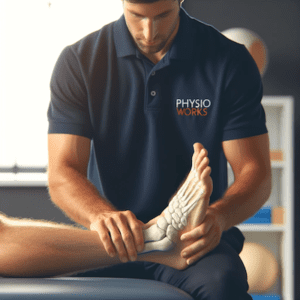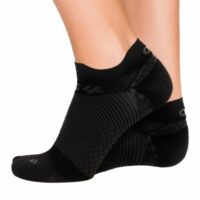Ankle Pain
Article by John Miller

Managing Ankle Pain: The Role of Physiotherapy
Ankle pain, a common complaint among Australians, can stem from various causes. It ranges from acute injuries like sprains to chronic conditions like arthritis. Physiotherapy plays a pivotal role in managing these conditions, offering relief and improved mobility.
Understanding Ankle Pain
The ankle, a complex joint, is prone to injuries and disorders. The most common include:
- Sprains and Strains: These occur when ligaments (sprains) or muscles (strains) around the ankle are overstretched or torn. They’re often due to sudden twists or impact.
- Fractures: Ankle fractures involve a break in one or more of the ankle bones, typically resulting from a high-impact injury.
- Tendinopathies: These refer to tendon injuries, which can develop from overuse or improper foot mechanics.
- Arthritis: Osteoarthritis and rheumatoid arthritis can affect the ankle, leading to pain and stiffness.
- Biomechanical Issues: Problems with foot alignment and gait can lead to ankle pain.

Benefits of Physiotherapy
Physiotherapy offers numerous benefits for those suffering from ankle pain:
- Pain Reduction: Techniques like manual therapy, ultrasound, and specific exercises can significantly reduce pain.
- Improved Mobility: Physiotherapists use exercises and stretches to enhance joint mobility and muscle flexibility.
- Strength Building: Targeted exercises strengthen the muscles around the ankle, providing better support and reducing the risk of future injuries.
- Correction of Biomechanical Issues: Physiotherapists can identify and correct issues with gait and alignment, preventing further pain.
- Education and Prevention: Patients learn about their condition and how to prevent future injuries through proper techniques and lifestyle changes.

Physiotherapy Techniques for Ankle Pain
Physiotherapists employ various techniques depending on the specific condition:
- Manual Therapy: Manipulation and mobilisation to improve joint function and reduce pain.
- Exercise Therapy: Customised exercises to strengthen and improve the flexibility of the ankle.
- Ultrasound Therapy: Using sound waves to promote healing and reduce inflammation.
- Electrotherapy: Techniques like TENS (Transcutaneous Electrical Nerve Stimulation) for pain relief.
- Gait Analysis and Retraining: Correcting walking patterns to reduce stress on the ankle.
When to Seek Physiotherapy
If you experience persistent or severe ankle pain, swelling, or difficulty in walking, it’s crucial to consult a physiotherapist. Early intervention can prevent the condition from worsening and speed up recovery.
Conclusion
Ankle pain, while common, doesn’t have to be a persistent problem. With the right physiotherapy approach, it’s possible to manage pain effectively, regain mobility, and return to your daily activities. Remember, the key to successful treatment lies in timely consultation and adherence to the physiotherapist’s guidance.
What to Do?
If you’re struggling with ankle pain, don’t delay seeking professional help. A physiotherapist can provide you with a tailored treatment plan and guide you towards a pain-free life.
Rochedale - Call 38410277
Book Online: RochedaleSalisbury - Call 32751044
Book Online: SalisburySandgate - Call 32691122
Book Online: SandgateRelated Articles
- Sprained Ankle Treatment & Recovery Guide: Provides detailed guidance on effective physiotherapy treatments for a sprained ankle and tips for faster recovery.
- High Ankle Sprain: Focuses on the specific treatment and recovery process for high ankle sprains.
- Ankle Sprain Prevention: Shares strategies and tips for preventing ankle sprains.
- Tibialis Posterior Tendinopathy: Explains the condition and physiotherapy treatments for this specific type of ankle tendinopathy.
- Peroneal Tendinopathy: This article focuses on Peroneal Tendinopathy, detailing its causes, symptoms, and effective physiotherapy treatments
- Ankle Fracture: Discusses the approach for managing and recovering from ankle fractures.
- Anterior Ankle Impingement: Covers the causes and treatment for pain at the front of the ankle.
- Posterior Ankle Impingement: Discusses the condition, causes, and treatment options for pain at the back of the ankle.
- Ankle Arthritis: Explains how arthritis affects the ankle and the role of physiotherapy in managing this condition.
- Pes Planus (Flat Feet): Describes how flat feet can lead to ankle pain and the importance of addressing biomechanical issues.
- Rheumatoid Arthritis: Provides information on how systemic diseases like rheumatoid arthritis can manifest as ankle pain.










































































